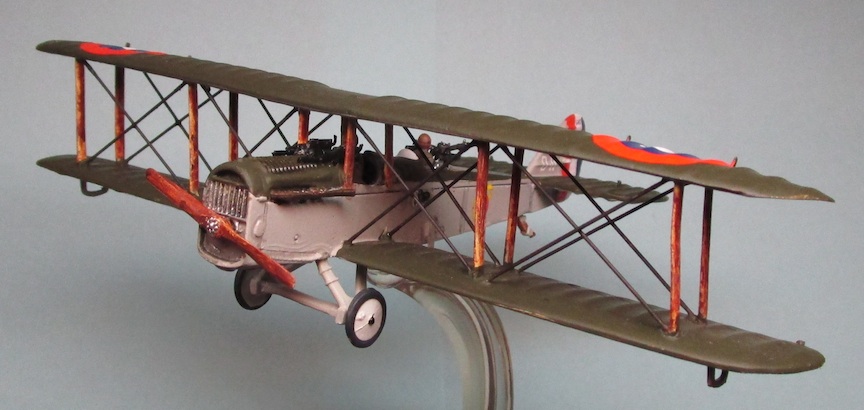Airco D.H.4

Pilot Gibbs & Observer Nelms
USMC Northern Bombing Group, Squadron C, 1918
(Wings of the Great War WW11001)
- Engine: One 400 h.p. Liberty 12
- Span: 42 ft 4 in
- Length: 30 ft 8 in
- Height: 10 ft 0 in
- Weight: 2,387 lb empty; 3,472 lb loaded
- Crew: Two
- Max Speed: 143 mph at sea level
- Service Ceiling: 21,800 ft
- Duration: 2 hr
- Armament: Two fixed, forward-firing Vickers MG and one free-firing Lewis MG; up to 460 lb of bombs
- Notes: The Airco DH.4 was a British two-seat biplane day bomber of World War I. It was designed by Geoffrey de Havilland (hence "DH") for Airco, and was the first British two-seat light day-bomber to have an effective defensive armament. It first flew in August 1916 and entered service with the Royal Flying Corps (RFC) in March 1917. At the time of its entry into the war, the United States Army Air Service lacked any aircraft suitable for front line combat. It therefore procured various aircraft from the British and French, one being the DH.4. As the DH-4, it was manufactured mostly by Dayton-Wright and Fisher Body for service with the United States from 1918, the first American built DH-4 being delivered to France in May 1918, with combat operations commencing in August 1918. This stunning model is a reproduction of a D.H.4 operating with the USMC Squadron D, one of only eight Marine aerial squadrons in existence during World War I, stationed in 1918 France.




 Up
Up






 Up
Up